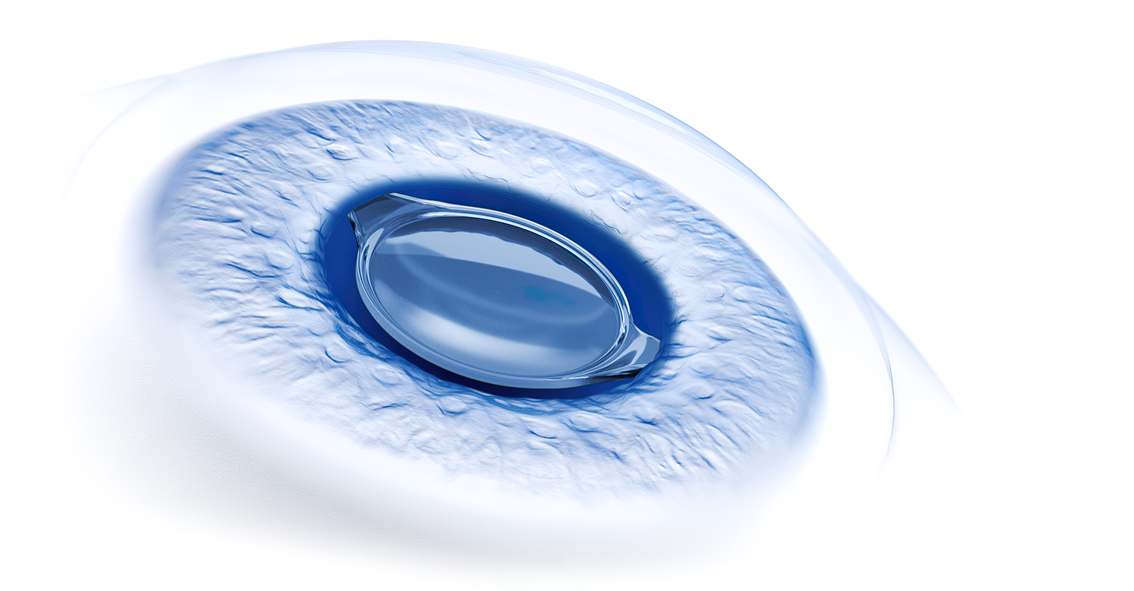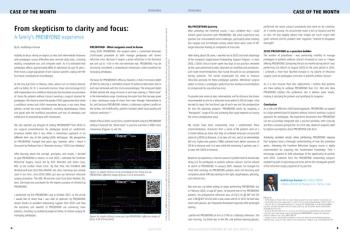
Evaluating the clinical performance of ZEISS AT ELANA and the new ’ELISA’* approach

In this insightful analysis, Dr. Joong Hun Kim presents real-world clinical outcomes with bilateral implantation of ZEISS AT ELANA 841P. Dr. Kim recommends AT ELANA® 841P as an excellent option for patients undergoing cataract surgery as its fully trifocal optical design translates into a full range of vision. He also introduces the so-called ‘ELISA’ approach for patients requiring astigmatic correction in one eye only, combining AT ELANA 841P and ZEISS AT LISA tri toric 939MP. Early objective and subjective clinical data from this novel approach reveal promising visual outcomes and high patient satisfaction
I began implanting multifocal IOLs in 2016 for patients wanting to achieve presbyopic correction after cataract surgery, and I have used lenses from different manufacturers. However, an IOL from the AT LISA® tri family (Carl Zeiss Meditec AG; Jena, Germany) is my preferred choice for the majority of eligible patients.
In my experience, the ZEISS AT LISA tri family is associated with faster visual recovery compared to other presbyopia-correcting IOLs. In addition, I find that patients implanted with an AT LISA tri enjoy excellent quality of vision, an outcome that I attribute to the high-quality optics. For patients needing astigmatic correction, I appreciate that the AT LISA tri toric platform provides excellent rotational stability. Importantly, patients treated with the AT LISA tri family are very satisfied with their long-term outcomes leading to a significantly high rate of word-of-mouth referrals.
Having such a positive experience with the AT LISA tri from ZEISS, I became interested in the AT ELANA® 841P trifocal IOL when it was introduced as a new addition to the ZEISS hydrophobic IOL portfolio. Compared with the AT LISA tri, the AT ELANA 841P offers the potential for better performance at near and intermediate distances, which is important when working at a computer or using a smartphone. The AT ELANA 841P optic is based on the AT LISA tri 839MP but is modified to have increased light transmission efficiency and a higher allocation of light to enhance near-to-intermediate vision without compromising far vision.** The AT ELANA 841P features a C-loop design with glistening-free*** hydrophobic biomaterial and is implanted using a fully preloaded injector system.1,2
Positive clinical outcomes
After achieving very good clinical outcomes in my first AT ELANA patients, I decided to add defocus curve performance testing to the follow-up regimen.
I recently conducted a retrospective analysis of data from 34 patients who had bilateral cataract surgery and implantation of the AT ELANA 841P. All patients had low levels of preoperative corneal astigmatism (range, 0.00 to 0.66 D). In addition, pre-operative refractive errors ranged from extreme myopia (-20.25 D) to high hyperopia (+4.00 D).
The results confirmed my initial positive impressions about the clinical performance of this new trifocal lens. Visual acuity (VA) outcomes of 28 patients evaluated at 1 month showed excellent functional vision across tested distances (table 1). Binocular uncorrected VA was 0.1 logMAR (Snellen equivalent 20/25) or better in all patients at distance, in 96% of patients at intermediate (80 cm), and in 89% at near (40 cm). Results for 18 patients seen at 3 months showed binocular uncorrected VA was 0.0 logMAR (Snellen 20/20) or better in all patients at distance and was 0.1 logMAR or better at intermediate in 83% and at near in 94%.
Defocus curve performance at 3 months showed that the AT ELANA 841P provided a broad depth of focus and a benefit of binocular summation, especially between +1.5 D and -3.0 D. Mean VA remained above 0.2 logMAR from +1.25 D to almost -3.0 D in monocular testing and from about +1.5 D to over -3.25 D in binocular testing.
The ‘ELISA’ approach
Cataract surgeons who implant multifocal IOLs appreciate that achieving quality vision requires addressing pre-existing astigmatism. I believe in using a toric IOL to correct any “significant” corneal astigmatism. My threshold for implanting a toric IOL is ~0.5 D of regular corneal astigmatism, and a 1.0 D or 1.5 D cylinder IOL accounts for the vast majority of my toric IOL cases. Not uncommonly, patients need astigmatic correction with a toric IOL in only one eye. Once the AT ELANA 841P became available, I began using it for these latter patients in what I call the ‘ELISA’ approach (ELANA + LISA tri toric) where I implant an ZEISS AT LISA tri toric 939 M/MP IOL in the eye needing astigmatic correction and the ZEISS AT ELANA 841P in the fellow eye.
Results available from seven patients so far show that the ‘ELISA‘ approach is safe, effective, and associated with high patient satisfaction. Mean corneal astigmatism in these patients was 0.43 D in the eyes implanted with the AT ELANA 841P and 0.86 D in eyes needing toric correction. At the 3-month follow-up, all patients achieved binocular uncorrected VA of 0.1 logMAR or better at distance, intermediate, and near. Visual acuity outcomes (table 2) were similar to the bilateral AT ELANA 841P group.
Defocus testing in the ‘ELISA’ group highlights again the benefit of binocular summation but also shows that the AT ELANA 841P provides better performance than the AT LISA tri in the near and intermediate range (defocus steps -1.5 D to +2.5 D).
Based on the excellent clinical outcomes in the ‘ELISA’ group, I was interested in better understanding patient-reported outcome measures and conducted the Catquest 9SF survey. It was completed by all seven patients at an average follow-up of 8.6 months (range 5.5 to 9 months). All patients indicated being very or fairly satisfied with their vision and noted having no difficulty at all when reading subtitles on digital screens. Six out of seven patients reported that their sight caused no difficulty in daily life. The seventh patient noted only “some difficulty”.
Conclusion
The results from my analyses show the benefit of binocular summation when using multifocal IOLs. They also strengthen my belief that the design features of the AT ELANA 841P make it the most advanced presbyopia-correcting IOL for suitably selected patients wanting to reduce spectacle dependence across a full range of vision. Looking ahead, I hope to corroborate my conclusion with findings from Catquest 9SF surveys completed by patients who had bilateral AT ELANA 841P implantation. The combination of very good clinical outcomes and high patient satisfaction establishes ‘ELISA’ in my practice as a new option to treat patients requiring a toric IOL in one eye only. Based on my experience so far, I am comfortable using this approach for presbyopic correction in patients who prioritize full range of vision but need unilateral astigmatic correction.
Reference:
- Borkenstein AF, Borkenstein EM. Long-term clinical results and scanning electron microscopic analysis of the aspheric, hydrophobic, acrylic intraocular lens CT LUCIA 611P(Y). Clin Ophthalmol. 2018;12:1219-1227.
- Borkenstein AF, Borkenstein EM. Geometry of acrylic, hydrophobic IOLs and changes in haptic-capsular bag relationship according to compression and different well diameters: A Bench study using computed tomography. Ophthalmol Ther. 2022;11(2):711-727.
* ELANA + LISA tri toric
** Compared to AT LISA tri in photopic conditions in virtual implantations and optical bench tests.
*** Grade 1 (traces) or better for 85% of the patients up to and including 12 months according to Christiansen scale and based on internal clinical trial outcomes and on published clinical data.
Joong Hun Kim, MD is the Medical Director at Gangnam ID Eye Center, Seoul, South Korea, specializing in cataract and refractive surgery. He is a paid consultant to Carl Zeiss Meditec.
Newsletter
Get the essential updates shaping the future of pharma manufacturing and compliance—subscribe today to Pharmaceutical Technology and never miss a breakthrough.











































